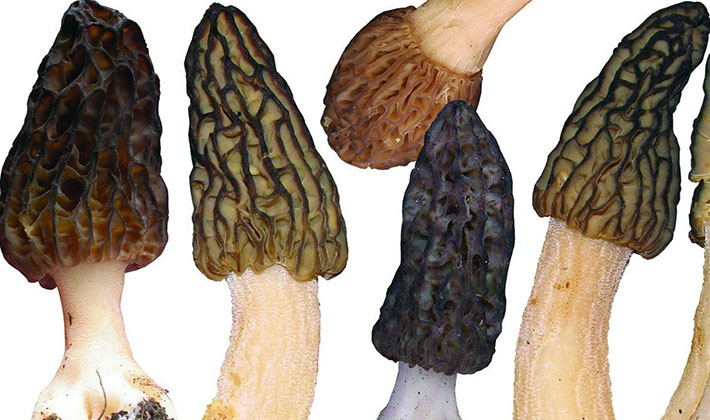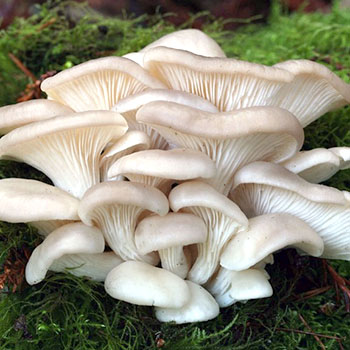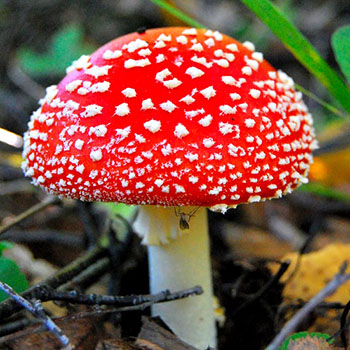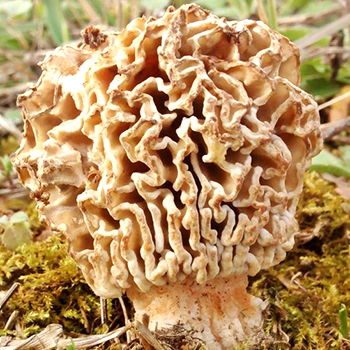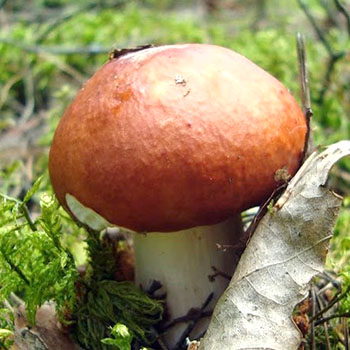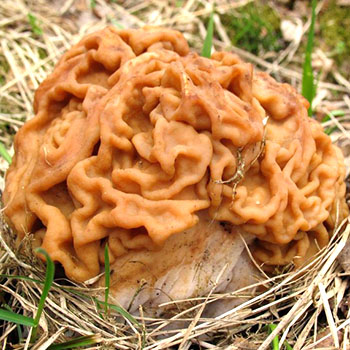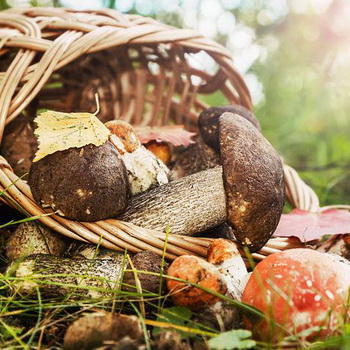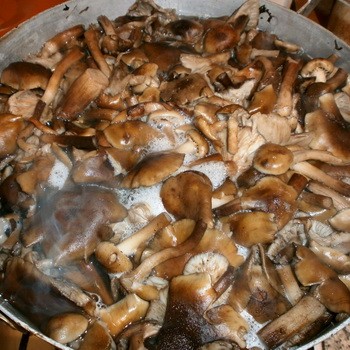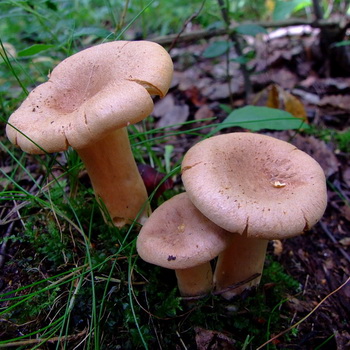Features of morels of different types
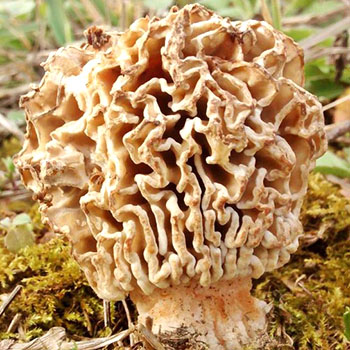
Inveterate mushroom pickers know perfectly well when to pick up the lines: these mushrooms appear in the forest on May Day holidays or on Victory Day. And immediately after them, and sometimes at the same time, you can go to the forest for lines. From time immemorial, rural residents associated the period of morels with the spring replenishment of edible reserves. Very often it was these mushrooms that were the first wholesome meal after a hungry winter. Morels of all kinds - delicious mushrooms with delicate hats. They are good and fried, and pickled, and salted. In addition, some varieties have medicinal properties. You can familiarize yourself with the photo, description and distinguishing features of lines of different types in this material.
Morel conical
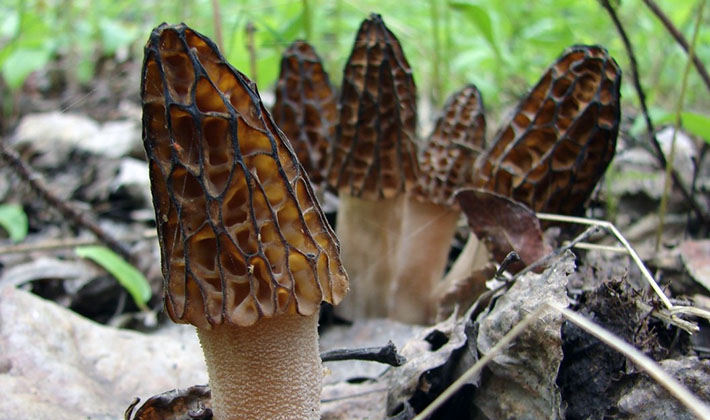
Where cones grow (Morchella conica): in grassy areas of deciduous and mixed forests, often at the edges and in plantings, grow in groups or singly.
Season: April May.
The hat has a diameter of up to 2-4 cm and a height of up to 10 cm. A distinctive property of the species is a bell-shaped conical hat of gray-brown color with a cellular surface. The bottom hat fuses with the leg.
As can be seen in the photo, in this type of morels, the surface of the hat is cellular-ribbed with elongated rhomboid cells, similar to bee honeycombs, separated from each other by dark partitions:
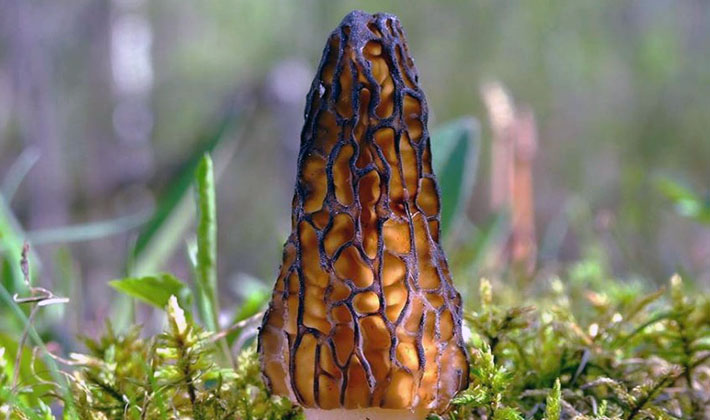

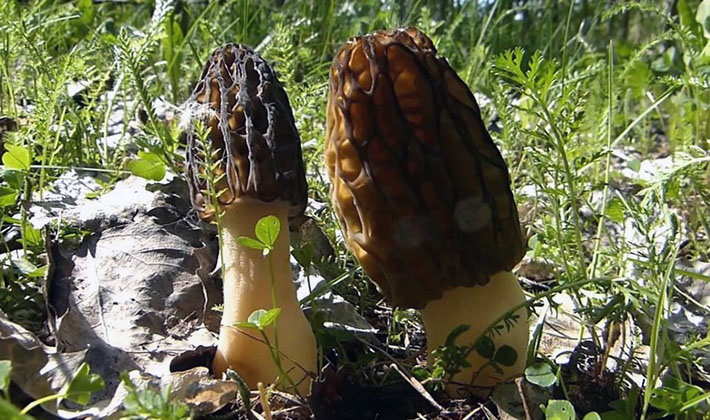
The leg has a height of 3-8 cm, 15-30 mm thick, white or yellowish, cylindrical, hollow inside.
Pulp: waxy, brittle, whitish, odorless and with a pleasant taste.
Records. The leg in the upper part immediately turns into a hat, so there are no plates as such.
Variability. The color of the hat changes; first it is gray-brown, later gray-brown or olive-black.
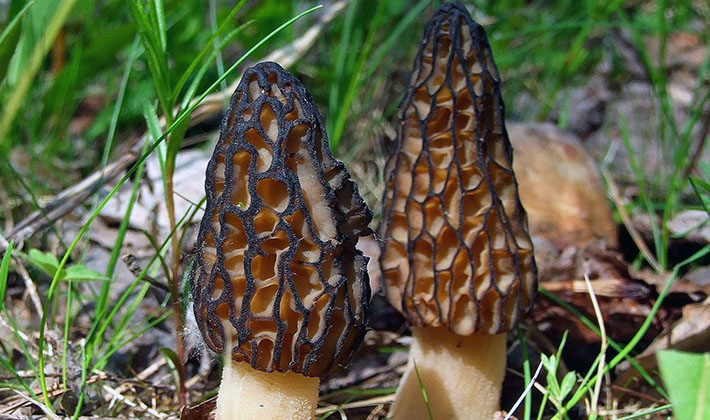
Similar views. According to the description, morel conic mushroom is similar to morel (Morchella esculeuta). The main difference is with. ordinary is not sharp-pointed or candle-shaped, but rounded bell-shaped.
Methods of preparation: mushrooms are fried, boiled, canned.
Edible, 3rd category.
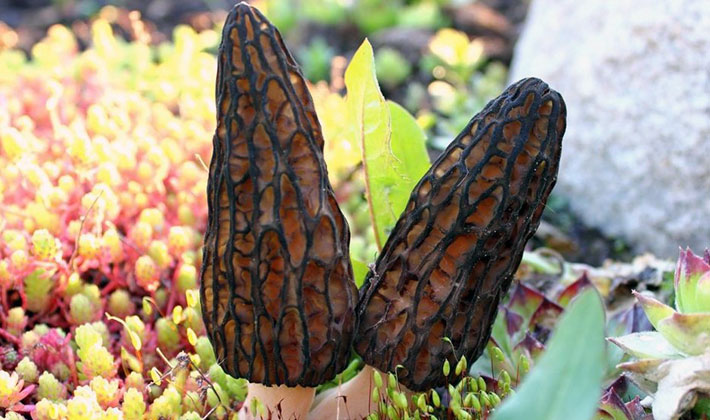
Therapeutic properties:
- Tincture and extract from morels is used to restore vision.
- It is used to treat myopia, age-related hyperopia and cataracts.
- From time immemorial, morels calmed the nervous system and restored visual acuity.
Morel hat
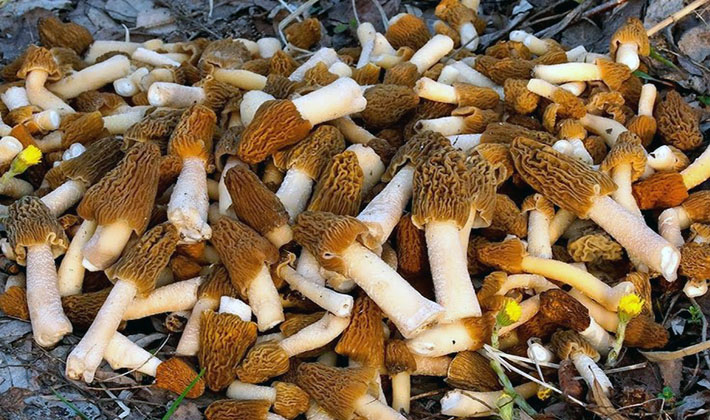
Morel Cap (Verpa conica) habitats: sandy and calcareous soils in deciduous and mixed forests, grow in small groups.
Season: April May
The hat has a diameter of 2-4 cm, a height of 2-4 cm, the shape of the mushroom is candle-shaped with a hat. A distinctive feature of the species is a long white-cream leg and a brown or olive-brown wrinkled small bell-shaped hat. The hat is attached to the leg to its top so that the edges of the hat remain free.
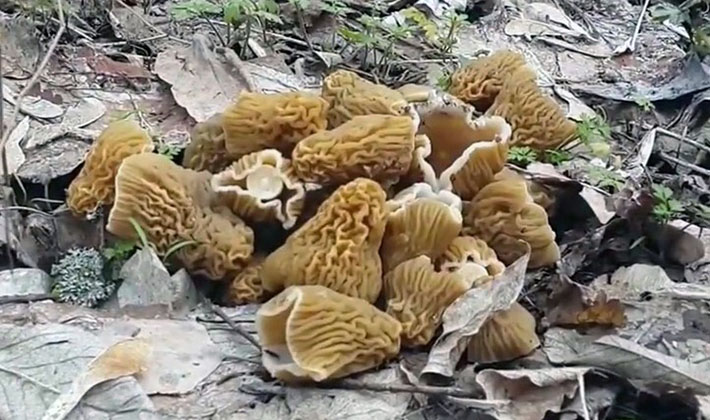
The leg has a height of 3-12 cm, a thickness of 5-18 mm, long and whitish, cylindrical, with a powdery coating, hollow inside. The surface of the legs is often covered with small brownish granules that are located longitudinally.
Pulp: whitish, tender, brittle, odorless and tasteless. The spores are white.
Records. The leg in the upper part immediately goes into the hat and there are practically no plates.
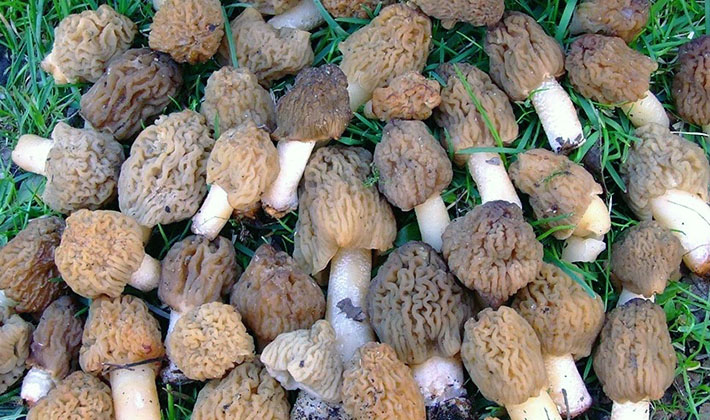
Variability. The color of the hat varies from brown to olive green to olive brown.
Similar views. Morel cap is similar to common morel (Morchella esculenta).
Edible, 4th category.
Morel ordinary

Where are morel more common (Morchella esculenta): in grassy places of deciduous and mixed forests, often near ash, poplar, elm, in bushes, on the edges and in plantings, they grow in groups or singly.
Season: March - May.

The hat has a diameter of 4-8 cm and a height of up to 10 cm. A distinctive property of the species is an egg-shaped or conical-bell-shaped hat of light brown or brown color with a cellular surface. The bottom hat fuses with the leg. The surface of the cap is ribbed with elongated rhomboid cells, similar to bee honeycombs, separated from each other by thin partitions.
The leg has a height of 4-12 cm, 15-30 mm thick, thick and strong, grooved, yellowish or light brown, cylindrical, hollow inside. The base of the leg is very thickened.
Pulp: whitish, light brown, with a faint pleasant smell.
Records. The leg in the upper part immediately turns into a hat, so there are no plates as such.
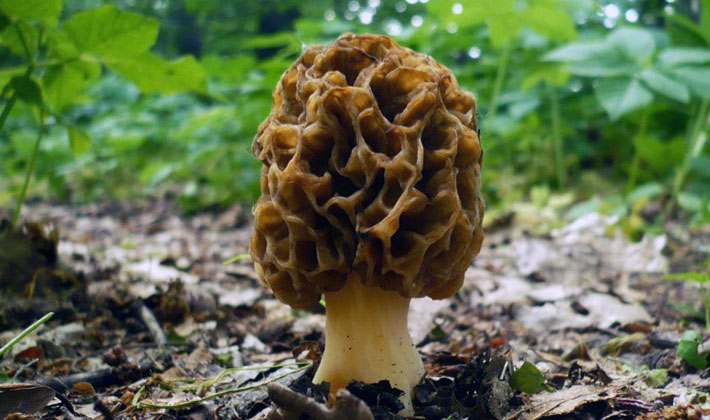
Variability. The color of the hat varies from light brown and tan to dark brown.
Similar views. Morel mushrooms, by their nature, look like conical morels (Morchella conica). A distinctive feature of morel more common is a relatively large honeycomb cap, which is attached to the leg along the entire plane of contact.
Methods of preparation: mushrooms are fried, boiled, canned, dried.
Edible, 3rd category.
Therapeutic properties: Similar to morel conic.
These photos show how ordinary morels look:
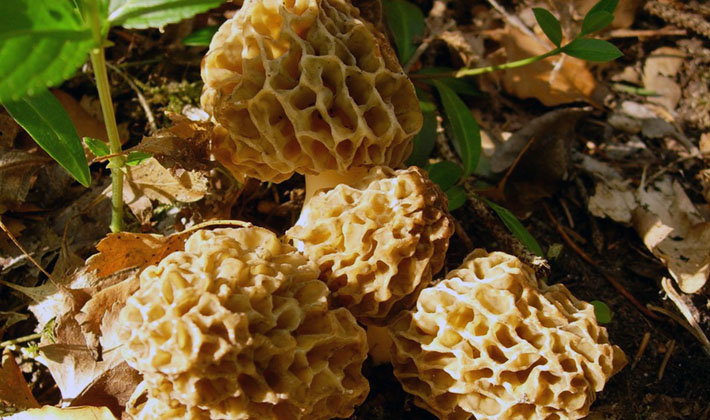

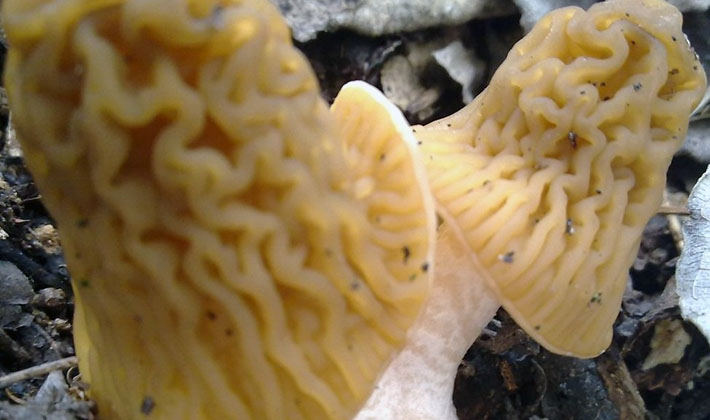
Morel ordinary round
Places of habitat of morel (Morchella esculenta, var. Rotunda): on old fallen trees covered with moss, in deciduous, and mixed forests.

When common morel mushrooms grow round: April May.
A distinctive feature of the species is the small round shape of the whole mushroom without a leg, or with a rudimentary leg. The surface of the fungus is wavy and tuberous. The size of the mushroom is 0.5-4 cm.
Pulp: whitish, light brown, with a faint pleasant smell.
Records. There are no records as such.

Variability. The color of the hat varies from light brown and tan to dark brown.
Similar views. Morel ordinary round in color and the nature of the surface of the cap is similar to morel conical (Morchella conica), which differs in a sharp-conical or candle-shaped form.
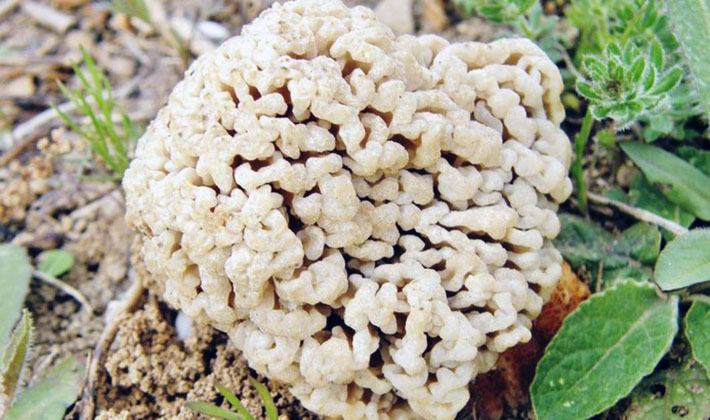
Methods of preparation: mushrooms are fried, boiled, canned, dried.
Edible, 3rd category.
Morel semi-free
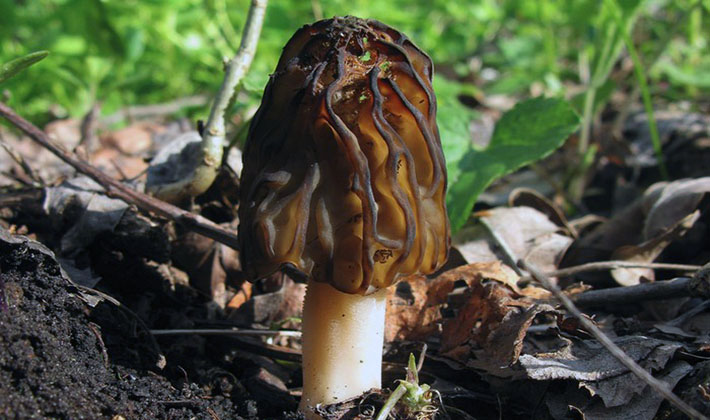
Habitat for morel morel (Morchella semilibera): in deciduous and mixed forests, near roads and forest paths, grow in groups or singly.
When morels are semi-free: April-May.
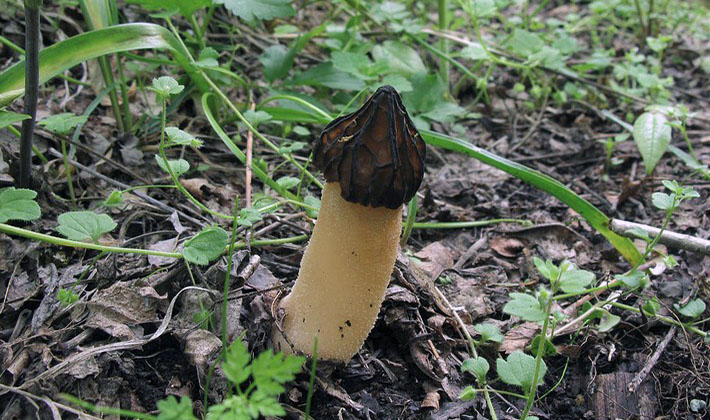
The hat has a diameter of 3-6 cm and a height of up to 8 cm. A distinctive feature of the view is the loose honeycomb cap with the bottom or rim to the leg, as well as a long and thick whitish-yellowish leg. The surface of the hat is cellular with hollows and protrusions.
The leg has a height of 5-10 cm, 15-40 mm thick, inside is hollow, white or yellowish, cream, with a powdery surface. The leg expands at the base.
Pulp: whitish, with a faint pleasant smell.
Records. The leg in the upper part immediately turns into a hat, so there are no plates as such.
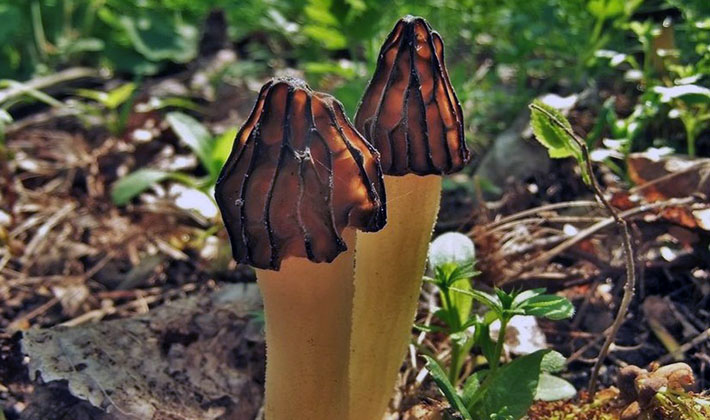
Variability. The color of the hat varies from light brown, later to dark brown.
Similar views.Semi-free morel looks like a mushroom morel cap (Verpa conica), but it differs in the small size of a dark brown shriveled rather than a mesh hat.
Cooking Methods: mushrooms are fried, boiled, canned, dried.
Look how the morel mushrooms look semi-free:

